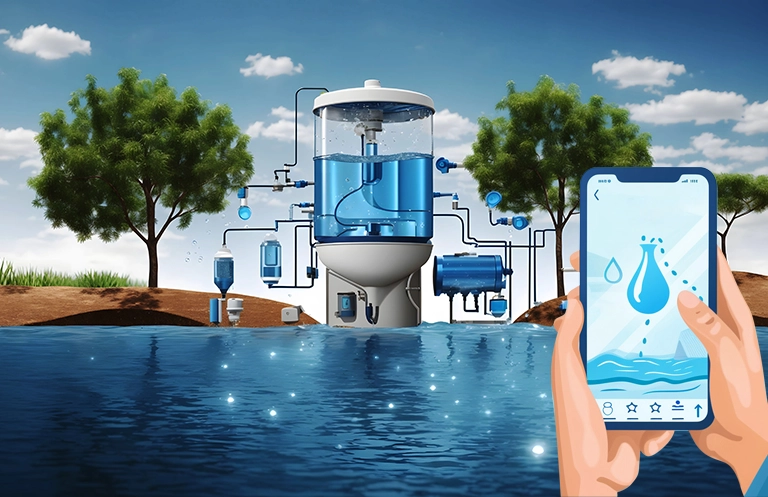We are surrounded by connected devices and they have become part of your daily lives. One can gauge the scale of adoption these devices considering that industry analysts and technology practitioners have asserted there already are more connected devices than the world population.
Interestingly though, it is predominantly the consumer-focused devices like wearables, smart household appliances, and vehicle pluggable devices that are connected.
- They carry minimal compute power and simple, support only low power connectivity protocols like BLE
- These typically need help (through last-mile gateways or mobile applications) in connecting to the event stream data management and analytics infrastructure on the cloud
- Analytics are mostly descriptive or diagnostic, limiting actionability
- They need not necessarily deliver state-of-the-art performance, sensitivity, and actionability
Building connected products for the enterprise
Unlike consumer device applications, enterprises connected assets and their use cases need higher security, reliability, and responsiveness and are often mission critical.
Security
Unaddressed vulnerabilities in edge node security could lead to massive security risks like the ones exposed by MIRAE botnet attack of 2016 which impacted internet access in most parts of US east coast. Also, imagine if MIRAE attack happened using industrial asset network – the compute power availability on edge in an enterprise asset is substantial and so would be the impact of such an incident.
Reliability
Devices in industrial and commercial asset network support complex application footprints addressing multiple end user roles. Operating system (OS) and system software (drivers, firmware) require periodic updates to ensure continued device functioning in a complex, integrated operating environment with multiple constraints.
Responsiveness
Since industrial asset networks are effectively an organism with functional inter-relationships between components, the system throughput depends substantially on the seamless coupling across the asset value chain. When one performance of one asset is impaired, the impact on the value chain is often multi-dimensional and amplified.
The asset network system needs to be highly responsive in monitoring and managing functionalities to minimize performance variations and in turn impact on overall value chain throughput.
Criticality
Needless to say, industrial and commercial workloads are mission critical and cost of downtime is substantial. For example, a food services equipment operator needs the deployed assets across network to function fulfilling all performance benchmarks at all times, with predictable usage linked maintenance to ensure maximize asset monetization and optimum safety and sanitization standards for end consumer. This goes to show that criticality is a composite, multi-faceted dimension of performance for commercial and industrial assets in action.
Azure Sphere – an integrated, production ready edge offering
Recently, Microsoft has launched into general availability Azure Sphere, an edge computing platform for building low cost connected devices that can be managed and monitored remotely. It comprises of hardware (a microcontroller unit i.e. MCU), software components (custom high level Linux based OS) and Azure Sphere Security Services. Let us look at how it evolved, what’s under the hood and what are some of the industry areas driving early adoption.
How it evolved
Azure Sphere started as Microsoft’s quest to enable secure access to vast networks of low cost IoT devices. It was christened as ‘Project Sopris’ and launched in March 2017. Work began with a single controller unit from MediaTek – the Wi-Fi-enabled MT7687.
After a year’s work with contributions from developers from in-house teams and developer communities at large (through publically posted security vulnerability detection challenges), Microsoft launched the program as Azure Sphere in preview in April 2018.
The first Azure Sphere certified chip was MediaTek MT3620. What followed was a series of chipmakers launching Azure Sphere certified chips and it became a booming ecosystem. As the edge platform matured, Microsoft boosted developer tools for building high-level applications for Azure Sphere with a software development kit (SDK) in the form of Visual Studio for Azure Sphere.
Let us now take a closer look at what Sphere is comprised of:
- Hardware components – Azure Sphere MCU is a highly secure microcontroller unit and has the following hardware components
- Certified chips from multiple major semiconductor companies like MediaTek, Qualcomm, NXP, Renesas.
- Security covering Pluton subsystem, hardware firewalls for compartmentalized I/O access to requisite application core mapped
- Integrated memory in form of 4MB+ of RAM, 16MB+ of flash
- Configurable multiplexed I/O to interface embedded devices with high-level application core or real-time core
- Connectivity
- Software components – the following are key software components of the Azure Sphere offering
- The high-level application layer includes runtime libraries and services for running domain-specific user applications in network user mode that are created for connected products to optimally function
- OS services help the applications to connect securely to security services, manage data traffic and debug issues and errors (if any)
- Custom Linux kernel in supervisor mode provides the foundation for executing application-specific processes. It has drivers for interfacing and communications
- Security monitor enables secure access by applications to the edge hardware and related computing resources in a networked environment
Building real-world products using Azure Sphere
Microsoft is focused on enabling a rich portfolio of an integrated edge + cloud applications using emerging technologies like pervasive, real-time connectivity (including cellular), machine learning and artificial intelligence for a wide spectrum of industries – retail, agriculture, manufacturing, smart cities, and energy. Be it retrofitting legacy assets and equipment for secure connectivity using Guardian modules or developing specialized products optimized for building cutting edge, mission-critical and complex use cases, Microsoft is betting big in bringing intelligence to the edge.
eInfochips is working with customers across industry verticals for engineering initiatives on connected products. As Microsoft Productivity Gold Partner, we have extensive experience in building connected asset networks for industrial, commercial and consumer applications using Azure services. Being a solution provider with the across the silicon-embedded-cloud spectrum, we are uniquely positioned to help customers drive their Azure Sphere adoption from concept to prototype to production.












